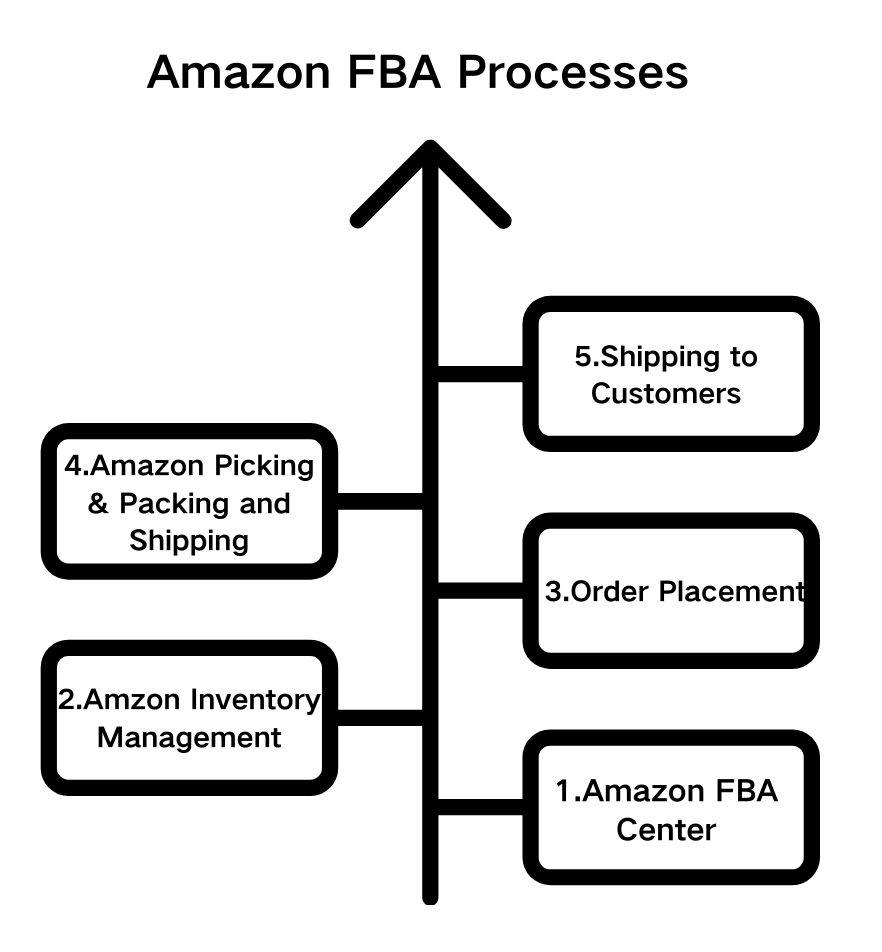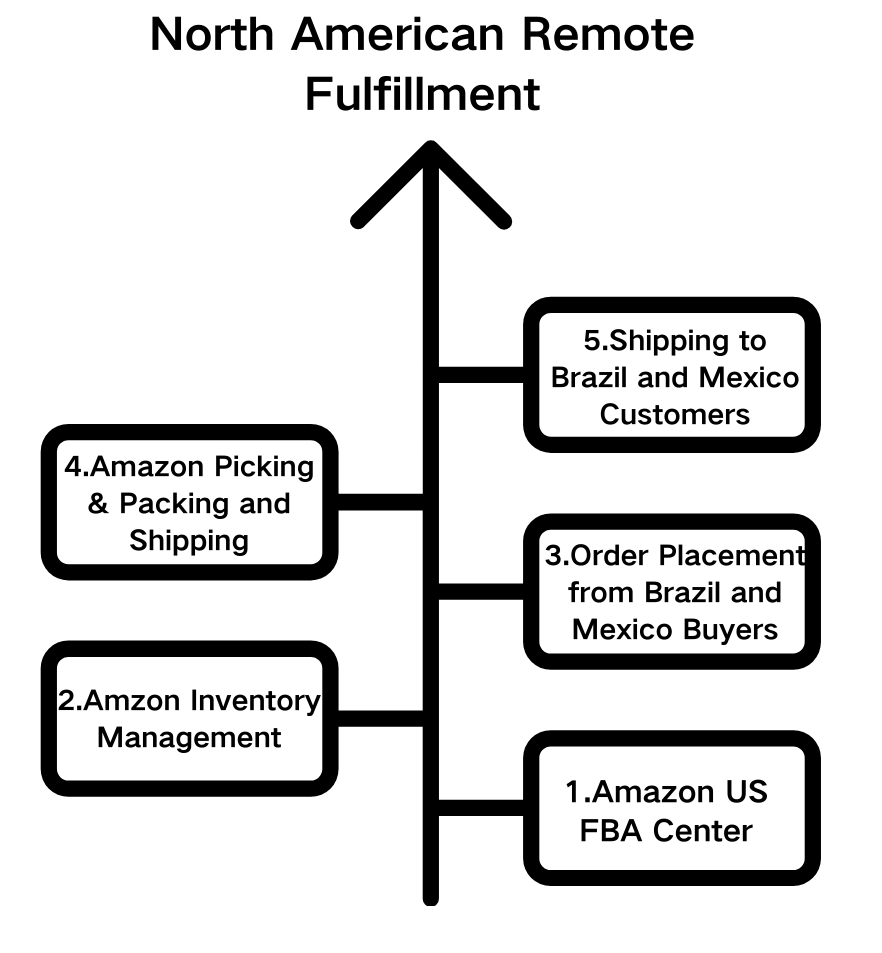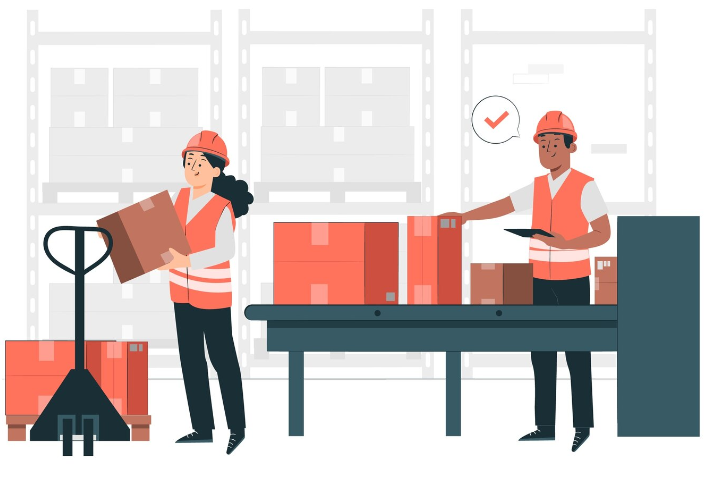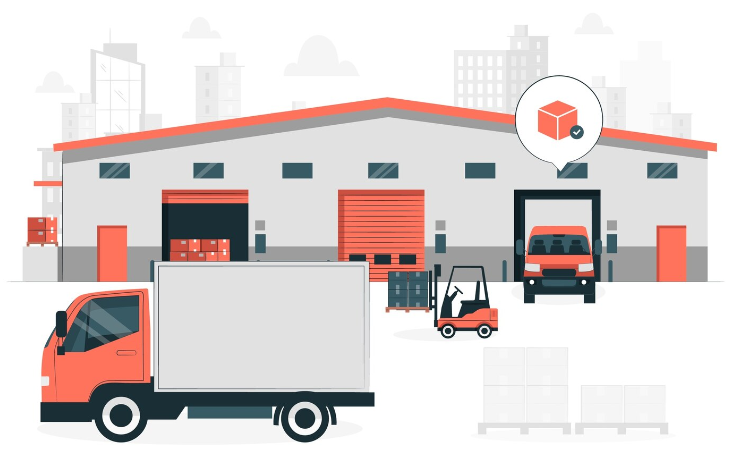Table of Contents
The 4 Major Ecommerce Shipping Solutions for Latin America
Time: Nov 07,2024 Author: SFC Source: www.sendfromchina.com
Latin America is emerging as a hotbed for eCommerce growth, yet it brings a set of unique logistical challenges for online retailers. To effectively penetrate this diverse region, businesses need the right shipping solutions that can handle the complexities of Latin American markets.
This article dives into four key options—Fulfillment by Amazon (FBA), North American Remote Fulfillment (NARF), Merchant Fulfilled Network (MFN), and third-party warehouses—to help you decide which approach best supports your eCommerce expansion into Latin America.
1. Fulfillment by Amazon

FBA has been a game-changer for businesses globally, offering a range of fulfillment services where Amazon handles most logistics, from warehousing to shipping. However, the dynamics shift slightly when it comes to Latin America.
FBA allows you to leverage Amazon’s local fulfillment services in Mexico and Brazil to quickly deliver products to consumers. Amazon handles product storage, and once an item is sold, it takes care of order sorting, packaging, delivery, and customer service, including buyer inquiries and returns. It helps businesses save on manpower, resources, and costs.
Advantages
Fastest Delivery Time: Products are eligible for Prime Free Same-Day Delivery (only in Mexico), Next-Day Delivery, or Two-Day Delivery, ensuring optimal delivery speed.Best Sales Efficiency: Products using local FBA services benefit from increased visibility and a higher chance of winning the Buy Box, leading to a significant boost in conversion rates.
Comprehensive Support: All promotion types can be submitted for free, and you can access a range of Amazon logistics support services and discounted shipping solutions.
Note
Mexico Sellers must register for a Mexican RFC tax ID before selling on Amazon Mexico.Brazil Sellers need to establish a local company and obtain a Brazilian CNPJ tax ID to create a local account and activate FBA services in Brazil.
Overall, stocking products locally may require certain certifications. To determine which products need certification and the type required, it is recommended to consult with your logistics and warehousing provider.
Best For
Sellers seeking high business growth, with a focus on high-potential products, and who are willing to make long-term investments in Latin America.2. North American Remote Fulfillment (NARF)

Amazon North America Remote Fulfillment is a logistics solution from Amazon designed to help sellers tap into new business opportunities across North and Latin America and expand their market reach.
With this service, sellers can ship products stored in U.S. FBA warehouses directly to Amazon marketplaces in Brazil, Mexico, and Canada. It allows you to test the demand for popular U.S. products on these marketplaces at a low cost, assessing their potential for success in new regions. It also simplifies inventory management by eliminating the need for separate stock across sites, cross-border shipping logistics, and import duties.
Advantages
Effortless Entry: No need to register a local tax ID, store inventory locally, or tie up capital, allowing for quick and low-risk market entry.Simple Setup: No additional documentation required; sellers can join automatically or with one click via invitation, making it easy to test the market at low cost.
Increased Traffic: Amazon fulfillment unlocks Prime member traffic, providing more sales opportunities.
Hassle-Free Returns: Free returns to U.S. FBA warehouses; eligible items can be restocked and sold again.
Flexible Pricing: The system automatically adjusts pricing to maintain profit margins consistent with the U.S. market, while sellers can also set prices in bulk.
Exclusive Benefit for Mexico: U.S. deals can be freely synced to the Mexico marketplace, unlocking additional promotional traffic.
Exclusive Benefit for Brazil: Amazon's participation in Brazil's PRC program handles tariff collection and payment on behalf of sellers, simplifying the process.
Note
For tariff declarations, Amazon uses the standard selling price, which can raise the cost. Combined with FBA fulfillment fees, sellers should monitor the competitiveness of their pricing.
Due to international shipping restrictions and destination market regulations, certain products cannot be shipped to Mexico or Brazil through the remote fulfillment program.
Best For
Ideal for U.S. brand sellers who want to explore emerging Latin American marketplaces but cannot immediately expand to Mexico and Brazil due to tax and logistics compliance requirements. The Remote Fulfillment program allows you to quickly gauge customer interest in your products on the Mexico and Brazil marketplaces. For products with strong sales, you can consider local fulfillment options for further expansion.
3. Merchant Fulfilled Network (MFN)

Merchant Fulfilled Network allows sellers to take complete control of their order fulfillment process, from warehousing to shipping. In Latin America, it can be both an opportunity and a challenge.
After receiving an order from the buyer, the seller ships the product directly to the buyer. The seller manages all aspects of the process, including inventory management, packaging, cross-border shipping, customer service, and returns management. Sellers on the Brazil marketplace should note that they must use Amazon pre-approved PRC logistics providers for shipments.
Advantages
Broad Product Range: MFN has fewer product restrictions, allowing sellers more freedom in product selection. For large, heavy, or restricted items that FBA cannot ship, sellers may consider using MFN for fulfillment.Flexible Cost Investment: MFN reduces inventory buildup, avoids overseas storage fees, and lowers capital requirements. Sellers can choose their logistics and shipping methods, giving them control over costs.
Wide Delivery Range: With third-party logistics providers handling shipping, sellers can select different carriers based on delivery needs, expanding their sales reach.
Easy New Product Testing: MFN enables sellers to test new products and gauge customer response, helping them decide whether to continue, increase inventory, or switch to FBA.
Note
It’s important to monitor self-fulfillment performance metrics, which Amazon uses to assess seller operations. If performance metrics fall below the required levels, it may result in account restrictions.
Key metrics affecting self-fulfillment performance include: Late Shipment Rate, Pre-Fulfillment Cancel Rate, Valid Tracking Rate, On-Time Delivery Rate, and Return Dissatisfaction Rate. Sellers can review their Customer Service Performance and Shipping Performance on the Account Health page under Performance in Seller Central to make targeted improvements.
For selling on the Brazil marketplace, product prices set on the seller platform must include import taxes and ICMS (Goods and Services Circulation Tax).
Best For
New Sellers: Use MFN to test product popularity and understand consumer preferences in Mexico and Brazil, allowing for adjustments in product selection strategy and, based on demand, increasing inventory or switching to FBA or local fulfillment.
Small to Medium Sellers: MFN helps avoid risks related to non-compliant product selection and excess inventory, reducing the need for large stockpiles and easing inventory pressure and costs.
4. Third-party Overseas Warehouse

For businesses looking to expand beyond Amazon-specific fulfillment options, partnering with third-party logistics providers (3PLs) or overseas warehouses can provide a broader reach within Latin America.
Advantages
Overseas warehouse fulfillment and collection, offering a more convenient packing and shipping process; direct payment to cross-border accounts, ensuring secure funds.
Note
Third-party providers vary in qualifications and capabilities, so it’s important to carefully assess them and avoid solely focusing on low prices. Amazon is also evaluating some providers now; if interested, you can contact the Brazil site manager for further discussion.
Stocking goods locally in Brazil may require product certification for certain items. It’s recommended to confirm with logistics and warehousing providers to determine whether certification is needed and which type is required for specific products.
Best For
Sellers who have tested the waters in the Brazil marketplace through remote fulfillment or traditional small parcel methods and achieved good results, and now wish to further expand their business on the Brazil site.
5. Get Started with Amazon X-Day Delivery Carrier -- SFC
SFC stands at the forefront of order fulfillment with cutting-edge facilities in Shenzhen, China. Utilizing sophisticated software, we specialize in seamless and trustworthy fulfillment solutions for ecommerce, dropshipping, and crowdfunding platforms. At SFC, we are dedicated to accelerating your business growth through secure warehousing, efficient processing, customizable packaging options, and adaptable shipping strategies while saving you time and money.
Whether you have or do not have a fulfillment partner, particularly your products manufactured in China, you should consider SFC. Click the button below and get help from SFC logistics experts.
What Makes SFC Special
Over 17 Years of 3PL and Order Fulfillment ExperienceAll-in-one Tracking Number
Popular Platform API Integration
30 Days of Free Storage
No Hidden Fee
Custom Packaging
Worldwide shipping solutions
Value-added Services
6. FAQs
1. What are the main logistics challenges in Latin America for eCommerce?
Latin America presents unique challenges such as variable delivery infrastructure, customs regulations, and limited availability of large-scale fulfillment solutions. Addressing these issues often requires a combination of local partnerships and strategic use of fulfillment options like MFN and 3PLs.2. How does Fulfillment by Amazon (FBA) differ from Merchant Fulfilled Network (MFN)?
FBA is a fulfillment service where Amazon handles the logistics, while MFN allows sellers to control the entire fulfillment process, which is often advantageous in regions with specific shipping requirements, like Latin America.3. What is the North American Remote Fulfillment (NARF) program?
NARF allows U.S.-based sellers to reach Mexican and Canadian customers without maintaining local warehouses. Amazon handles cross-border logistics, offering an easier way for sellers to expand within North America.4. Are third-party warehouses a viable option for eCommerce in Latin America?
Yes, third-party warehouses offer flexibility, broad coverage, and often lower costs compared to Amazon’s fulfillment solutions. They allow businesses to reach multiple Latin American countries and deliver more efficiently.5. Which fulfillment solution is best for small businesses expanding into Latin America?
It depends on the business’s resources, target countries, and logistical capabilities. MFN and 3PLs offer flexibility, while FBA and NARF are convenient but limited in reach within Latin America. Post Views:451
Post Views:451
Copyright statement: The copyright of this article belongs to the original author. Please indicate the source for reprinting.
Previous Post
What Is Order Cycle Time & Why Is It Important?
Next Post
TAGS
Hot Research
Get a Custom China Fulfillment Solution with FREE Storage for 30 Days
 Want to know about our services, fees or receive a custom quote?
Want to know about our services, fees or receive a custom quote?
 Please fill out the form on the right and we will get back to you within a business day.
Please fill out the form on the right and we will get back to you within a business day.
 The more information you provide, the better our initial response
will be.
The more information you provide, the better our initial response
will be.






 TAGS:
TAGS: